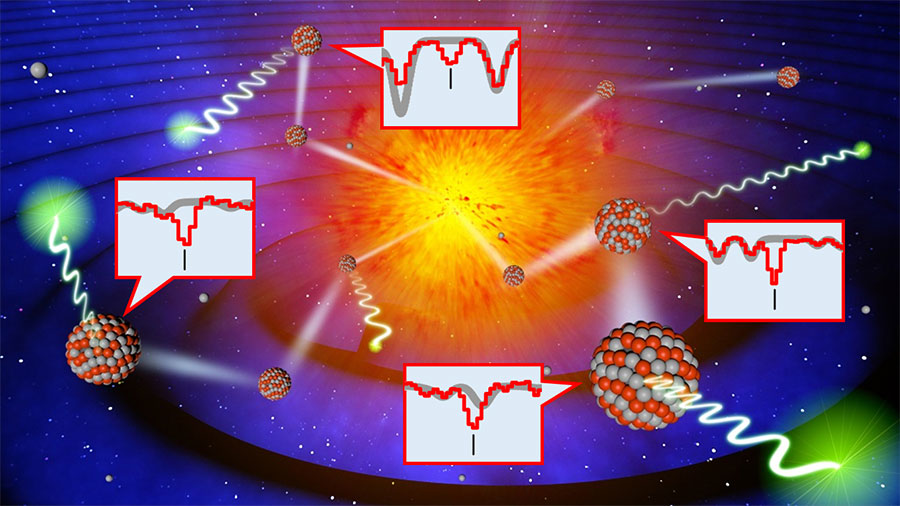NAOJ: Stellar Heavy Metals Can Trace History of Galaxies
Posted: Sat Jan 11, 2020 4:08 pm
Stellar Heavy Metals Can Trace History of Galaxies
National Astronomical Observatory of Japan | 2020 Jan 09
Identification of Absorption Lines of Heavy Metals in the
Wavelength Range 0.97–1.32 μm ~ Noriyuki Matsunaga et al
National Astronomical Observatory of Japan | 2020 Jan 09
Astronomers have cataloged signs of 9 heavy metals in the infrared light from supergiant and giant stars. New observations based on this catalog will help researchers to understand how events like binary neutron star mergers have affected the chemical composition and evolution of our own Milky Way Galaxy and other galaxies.
- Conceptual diagram of this research. Various heavy metals with unique wavelength signatures are produced in an explosion following a merger of binary neutron stars. These metals are then incorporated into newly forming stars where their signatures can be observed. (Credit: NAOJ, University of Tokyo)
Right after the Big Bang, the Universe contained only hydrogen and helium. Other elements were formed later through nuclear fusion in stars or violent events like supernovae or binary neutron star mergers. However, the details of the various processes and their relative contributions are still poorly understood. Better understanding of the chemical evolution of galaxies is important to understand how the rich element environment of planets like Earth came to be. In particular, metals heavier than nickel can be used to trace violent events such as binary neutron star mergers. ...
Identification of Absorption Lines of Heavy Metals in the
Wavelength Range 0.97–1.32 μm ~ Noriyuki Matsunaga et al
- Astrophysical Journal Supplement 246(1):10 (2020 Jan) DOI: 10.3847/1538-4365/ab5c25
- arXiv.org > astro-ph > arXiv:1911.11277 > 25 Nov 2019


